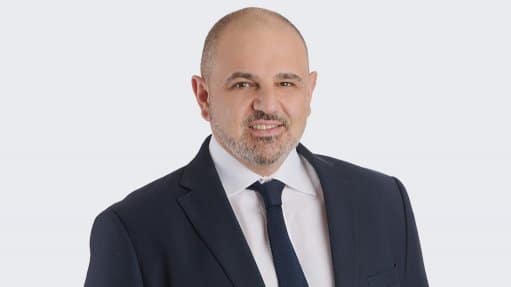The continued weakening of platinum group metal (PGM) prices and macroeconomics have resulted in the Karo platinum project timeline for commissioning being extended out by 12 months to June 2025, with the opportunity to accelerate the timeline as markets become more favourable.
The Karo platinum project, an openpit PGMs project under construction in Zimbabwe’s Great Dyke, is a long-life asset with an initial 17-year life-of-mine.
The principal operating asset of Tharisa, the Johannesburg- and London-listed PGMs and chrome mining company, is its mechanised Tharisa mine in the south-western limb of South Africa’s Bushveld Complex, which has an 18-year pit life and can extend operations underground by at least 40 years.
The revised Karo timeline provides flexibility to navigate volatile market conditions, Tharisa CEO Phoevos Pouroulis stated in the company’s production report for the fourth quarter and the year ended September 30.
“Our growth strategy remains firmly intact, with continuous optimisation at the Tharisa mine, investment in downstream beneficiation, and our commitment to the development of the multi-generational Tier 1 Karo platinum project,” said Pouroulis.
“While current markets are volatile and unpredictable, we believe in the medium-term outlook for PGMs underpinned by a supply-side-constrained economy, this supported by a robust chrome market driven by stable demand,” he added.
Tharisa’s co-product model was supported by a strong recovery in chrome production in the second half of the year and benefited from a 26% increase in price.
Chrome production for the financial year was 1 580.1 000 t compared with 1 582.7 000 t in the previous financial year and yearly PGMs production was 144.7 000 oz, down on the 179.2 000 oz of the 2022 financial year.
The average annual metallurgical grade chrome concentrate price was up 26.2% at $263/t and the average yearly PGMs price was down 26.1% at $1 893/oz.
Group cash on hand of $268.8-million and debt of $142.2-million has the company in a net cash position of $126.6-million.
Production guidance for the 2024 financial year is between 145 000 oz and 155 000 oz of PGMs and 1.7-million to 1.8-million tonnes of chrome concentrates.
“Our margins remain strong due to our mechanised, low-cost operations, with a continued disciplined capital allocation strategy, ensuring investment in our existing businesses, providing sustainable growth and return to shareholders,” said Pouroulis.
MARKET UPDATE
Tharisa reports that the chrome market continues to support sustainable pricing, with reduced port inventory in China highlighting the tight market balance underpinned by the growth in Chinese domestic ferrochrome and stainless steel industries.
Supply chain complexities are exacerbated by constrained rail and port logistics in South Africa together with the effect of erratic electricity supply from Eskom.
The PGMs market remains under continued pricing pressure with uncertainty of the macro global economic outlook having a direct effect on the demand for the precious metals. This is overlain by further indecisiveness on the future of the internal combustion engine (ICE).
With the steep decline in PGM prices, analysts have cautioned that higher-cost producers within the PGMs industry are not profitable at these commodity prices. The ‘higher for longer’ concerns of the global interest rate market have impacted prices for now and Tharisa sees muted upside in the short term for PGM prices.
In the medium to longer term demand drivers, including the hydrogen economy, possible supply cuts at unprofitable PGM producers, project delays and capital discipline versus demand for the ICE, will require a recovery in PGM prices to ensure demand is met by supply.



